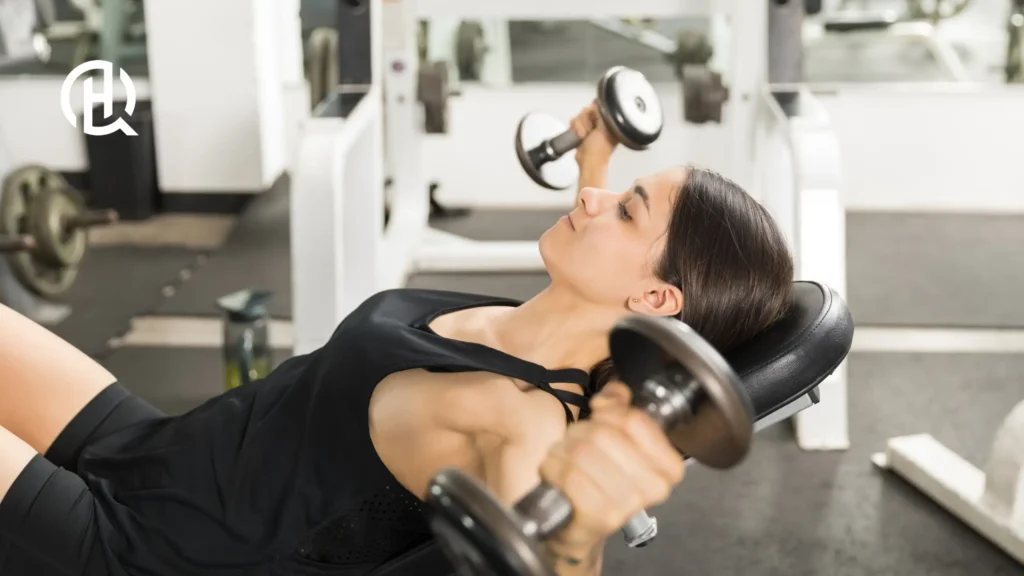

Want to get stronger, leaner, and take your fitness to the next level? Explore our workout programs now!
The dumbbell fly is a chest exercise that mainly works the pectoralis major, which is the large muscle in your chest. It also engages the front of your shoulders (anterior deltoids) and a little bit of your biceps to help control the movement.

There are two versions of the dumbbell fly: the seated pec-dec and the lying bench dumbbell fly, which can be considered a variation of the dumbbell bench press (the only difference is in the movement of the arms).
To do the perfect dumbbell fly, you will need dumbbells and a gym bench.
A short warm-up can be beneficial before exercise. If you feel you need one, here’s a simple warm-up for the dumbbell fly:
(Effects of Warming Up on Performance – 2010)
Ready? That means it’s time to get serious and do your first dumbbell fly! Start by lying flat on the bench (you can also have a slight incline if you wish), with both feet on the floor and a slight arch on the back. Then, grab the dumbbells, extend your arms right above your chest, and open them all the way to the sides, maintaining a moderate bent in the elbows.

The secret to the perfect dumbbell fly is extending the arms as far to the side as possible. If you feel any discomfort in your shoulder joints during this exercise, lower the weight.
When pushing the dumbbells back up, ensure they meet straight above your chest. Throughout the exercise, maintain control and don’t forget to breathe.

The weight of the dumbbells has a direct impact on the efficiency of any gym exercise, and the dumbbell fly is no exception. Choosing the right dumbbell weight depends on many factors, and it’s up to each athlete to determine what’s the right weight for them.
There’s no magic formula for finding the ideal weight for the dumbbell fly. The experts recommend that you start by doing some reps with very light dumbbells to master the exercise’s movement. Remember: you should NEVER compromise this for the sake of lifting heavier dumbbells.
Once you’ve “mastered” the exercise’s movement, increase the dumbbell’s weight gradually.

The dumbbell fly is a high-value exercise that should be part of a complete 6-day workout split, but it is not irreplaceable. The following exercises constitute decent alternatives, as they focus on the same group of muscles: